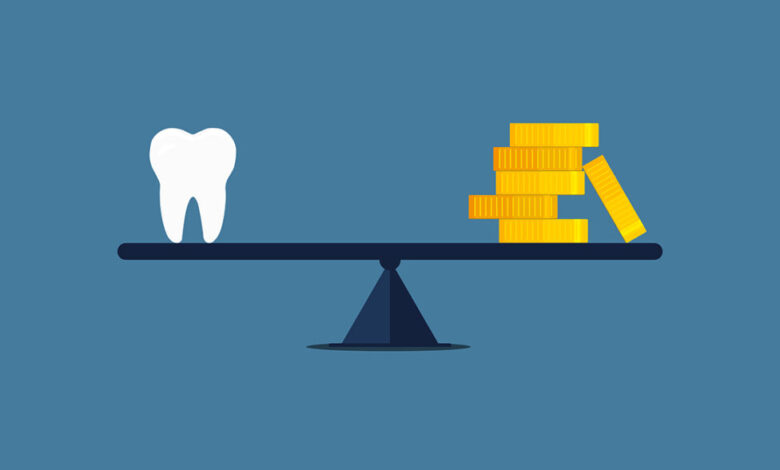A Definitive Guide Understanding Dental Insurance Plan Options for Employers

Dental insurance plays an integral role in a comprehensive employee benefits package, contributing to the overall health and satisfaction of the workforce. As an employer, selecting the appropriate dental plan is a crucial decision that impacts the value of the benefits package offered. Within this guide, we delve into the various dental insurance options available, analyze the financial implications of these plans, and examine the positive influence that effective dental benefits can have on employee morale and retention.
Key Takeaways
- Distinguishing between different types of dental insurance plans and their features.
- Evaluating factors crucial for selecting the most suitable dental plan for an organization.
- Understanding the financial components of dental plans to optimize savings.
- Recognizing the positive impact that well-chosen dental benefits can have on employees.
- Being aware of the future trends in dental coverage could benefit employers and employees alike.
Table of Contents
- Types of Dental Insurance Plans
- Factors to Consider When Choosing a Plan
- Understanding Plan Costs and Savings
- The Impact of Dental Benefits on Employee Satisfaction
- Navigating Regulatory Requirements
- Implementing Dental Benefits in the Workplace
- Monitoring and Evaluating Plan Performance
- Future Trends in Dental Coverage for Employers
Types of Dental Insurance Plans
Employers have a range of dental insurance structures at their disposal, each with distinctive characteristics for different needs. There are Dental Health Maintenance Organizations (DHMOs), typically known for their lower costs due to a more restricted choice of dental providers. Preferred Provider Organizations (PPOs), on the other hand, offer a broader network of dentists but generally come with higher premiums. Employers need to understand the nuances of each option to determine which structure aligns best with their workforce’s requirements. It is essential to analyze and compare dental insurance plans so employers can discern which insurance model offers the optimal blend of affordability, coverage, and provider access.
Factors to Consider When Choosing a Plan
Several factors must be considered when determining the right dental plan for an organization. There’s the financial aspect—understanding the budgetary constraints and balancing them with the needs of the employees. Employers must consider premiums, deductibles, and copayments, which will affect the company’s bottom line and the affordability of employees. Network size is also crucial; a larger network means employees have a better chance of finding a preferred dentist within the coverage. Accessibility and coverage specifics, including what procedures are covered—from preventive care to orthodontics—and any potential exclusions, are other important considerations.
Understanding Plan Costs and Savings
Navigating the financial intricacies of dental plans is vital for budget-conscious employers. Key components such as premiums, deductibles, copayments, and coinsurance must be understood and effectively communicated to employees. Employers must conceptualize how these factors affect the overall cost and value of the plan. Additionally, recognizing the role of annual maximums—the maximum amount a plan will pay for dental care in a given year—can prevent unexpected out-of-pocket expenses for employees, thereby enhancing the perceived value of the dental insurance offering. A thoughtful analysis of these cost factors helps ensure the chosen plan provides meaningful benefits at an affordable cost for both the employer and employees.
The Impact of Dental Benefits on Employee Satisfaction
Providing dental benefits goes beyond fiscal implications; it deeply influences employee satisfaction and company culture. Employees often view dental insurance as a key component of a complete benefits package, which can significantly influence an individual’s decision to join or stay with a company. Professional satisfaction and loyalty are fostered when employees feel cared for in fundamental aspects such as health and wellness. This sense of value helps retain staff and attract new talent. A survey of dental care benefits has shown that dental insurance is one of the benefits most appreciated by employees, often swaying their job choice and loyalty. Offering a dental plan that meets employee needs can improve retention rates and create a positive workplace environment.
Navigating Regulatory Requirements
Understanding the regulatory landscape surrounding employer-provided dental insurance is vital. Employers must navigate a web of federal and state regulations to ensure compliance and avoid legal pitfalls. This includes familiarity with laws such as the Affordable Care Act (ACA) and the Employee Retirement Income Security Act (ERISA), which dictate coverage requirements, reporting obligations, and employer responsibilities. Ensuring dental plans comply with these regulations is crucial for maintaining legal compliance and providing peace of mind for the employer and employees.
Implementing Dental Benefits in the Workplace
Introducing a new dental plan to an organization requires a thoughtful approach to ensure employee understanding and adoption. Educational initiatives, clear communication, and responsive support systems are key elements of a successful implementation. Providing comprehensive material explaining the benefits and terms of the new dental plan and hosting question-and-answer sessions can empower employees with the knowledge to make informed decisions about their dental care options.
Monitoring and Evaluating Plan Performance
Assessing the dental plan’s effectiveness in continuously meeting employee needs and expectations is crucial. Employers should regularly review plan utilization, gather feedback from the workforce, and analyze cost trends to determine whether the offering continues to be beneficial. Adjustments should be data-driven and responsive to employee feedback, ensuring the dental plan remains a valued part of the overall benefits package.




